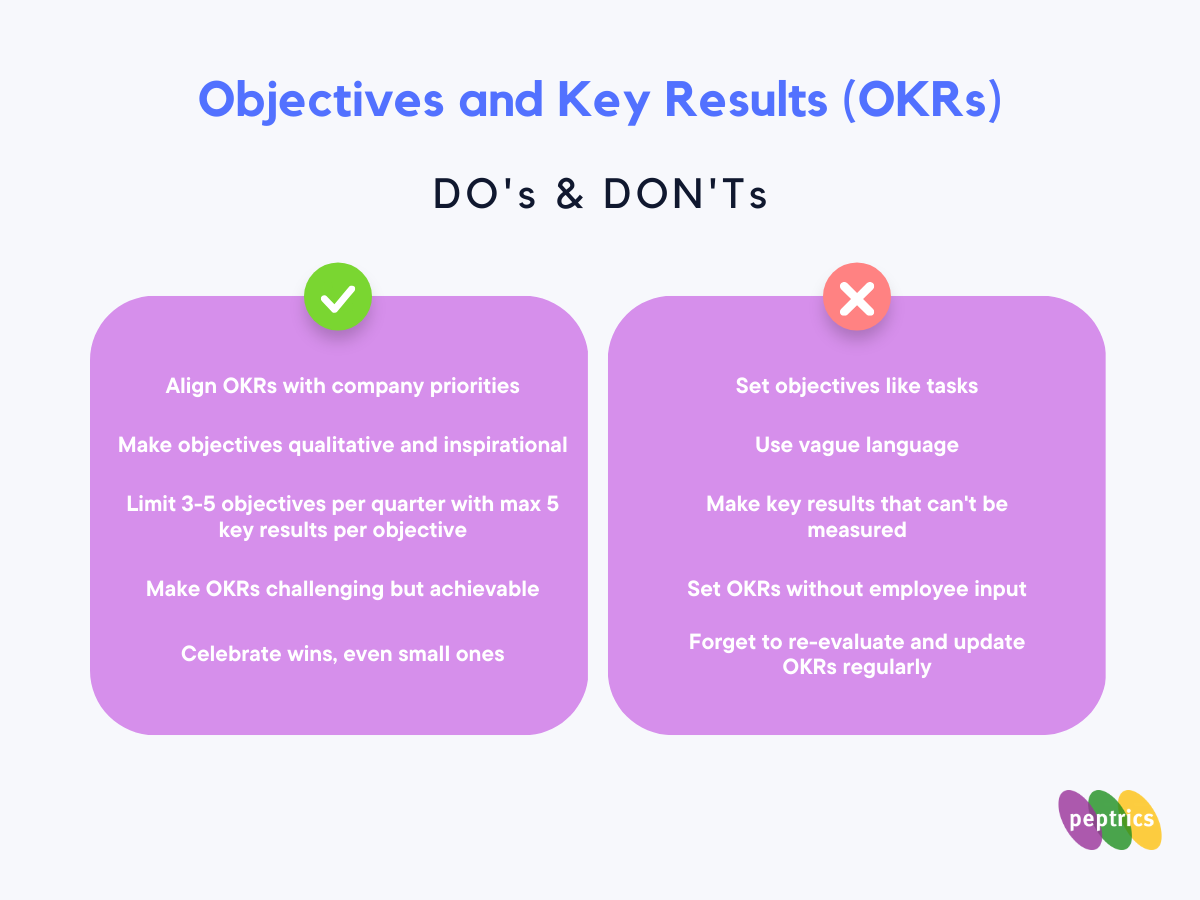Do's and Don'ts of OKRs
Are your Objectives and Key Results (OKRs) missing the mark?
Setting OKRs is hard; setting the right ones is even harder. Many companies adopt OKRs to drive alignment and focus. But without the proper approach and rigor, OKRs can fall short. The truth is, most companies struggle with OKRs. Despite best intentions, they end up frustrating employees rather than motivating them.
Here are some do’s and don’ts of OKRs:

DO’s
1. Align OKRs with company priorities
The whole point of OKRs is to focus effort on what matters most. Make sure your OKRs ladder up to overarching company goals.
2. Make objectives qualitative and inspirational
Bland and fluffy objectives diminish the effectiveness of OKRs.
3. Limit 3-5 objectives per quarter with max 5 key results per objective
Having more objectives or key results leads to scattered focus.
4. Make OKRs challenging but achievable
Stretch for excellence, but keep targets grounded in reality. Shoot for 60-70% achievement.
5. Celebrate wins, even small ones
Recognize efforts to motivate your team.
DON’Ts
1. Set objectives like tasks
OKRs indicate the most important priorities of the company and are not something to be checked off.
2. Use vague language
Vague and uninspiring OKRs lead to lackluster results.
3. Make key results that can’t be measured
Unmeasurable and non-time-bound key results simply can’t be achieved.
4. Set OKRs without employee input
Don’t dictate OKRs top-down; collaboration aids alignment.
5. Forget to re-evaluate and update OKRs regularly
Don’t set and forget; consistency is key.
With the right approach, OKRs can focus efforts, drive results, and boost engagement. But it requires avoiding common pitfalls. Follow these dos and don’ts, and your OKRs will start delivering on their promise.
P.S: Modern organizations use Peptrics to align teams and boost focus with OKRs. Sign up for an account to kickstart your OKR-powered agile performance management journey today!
